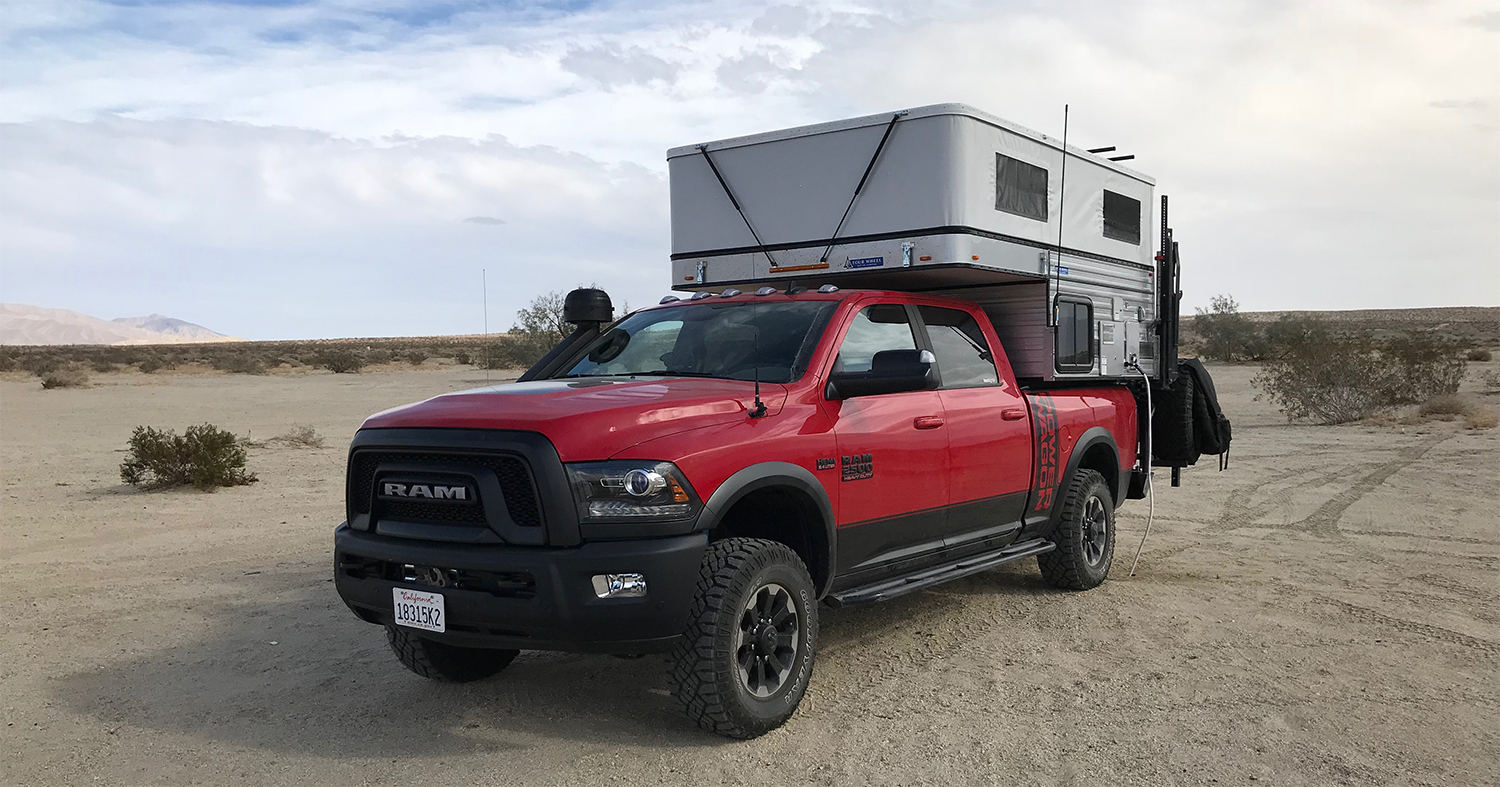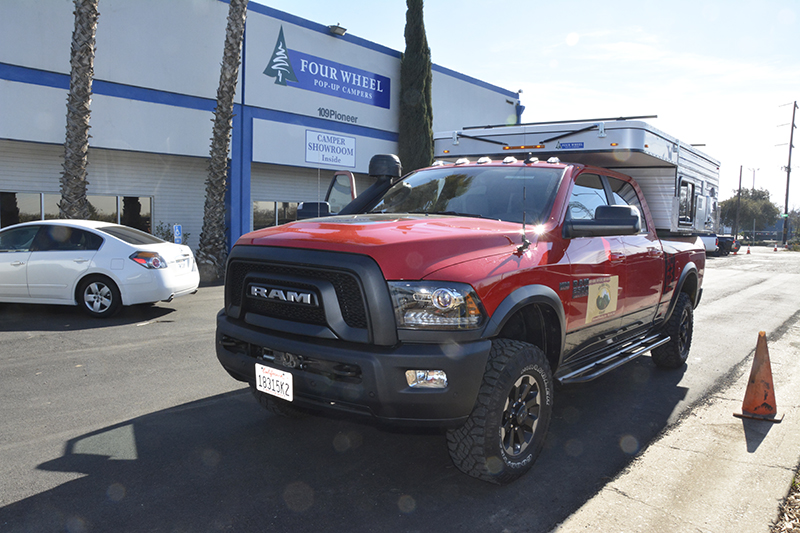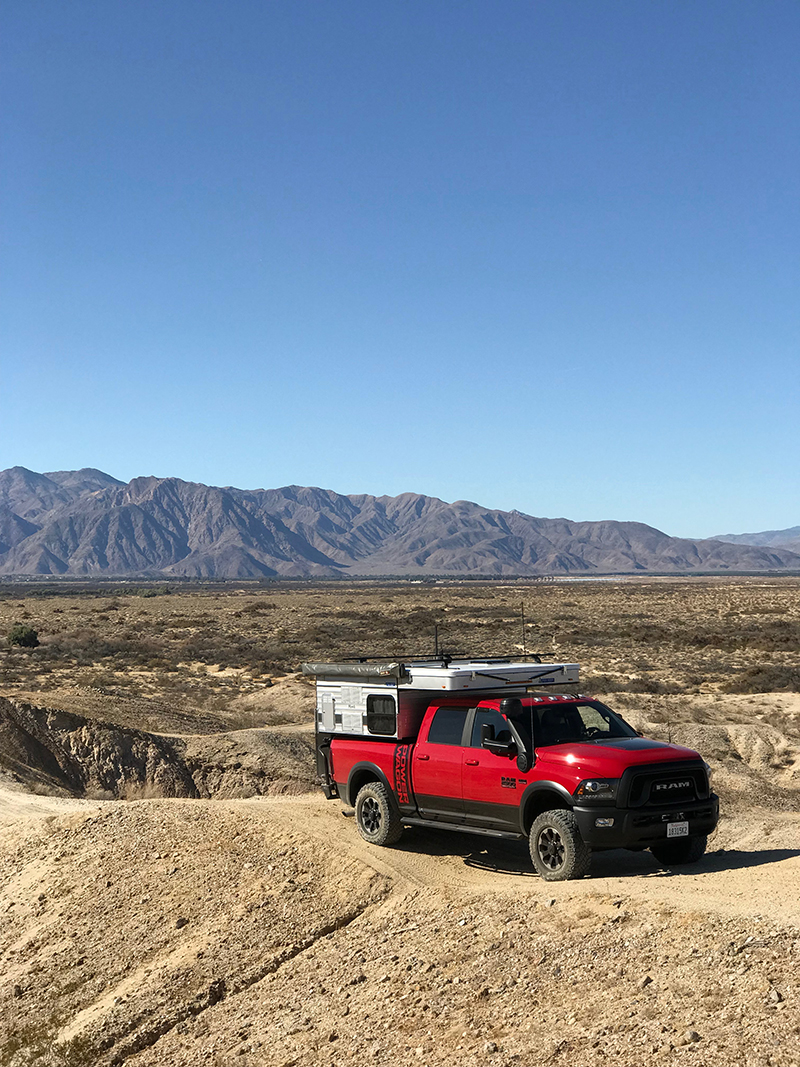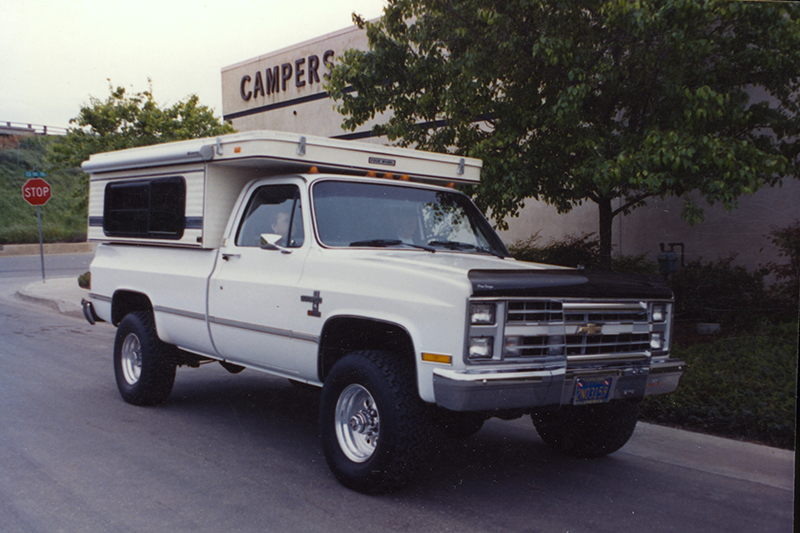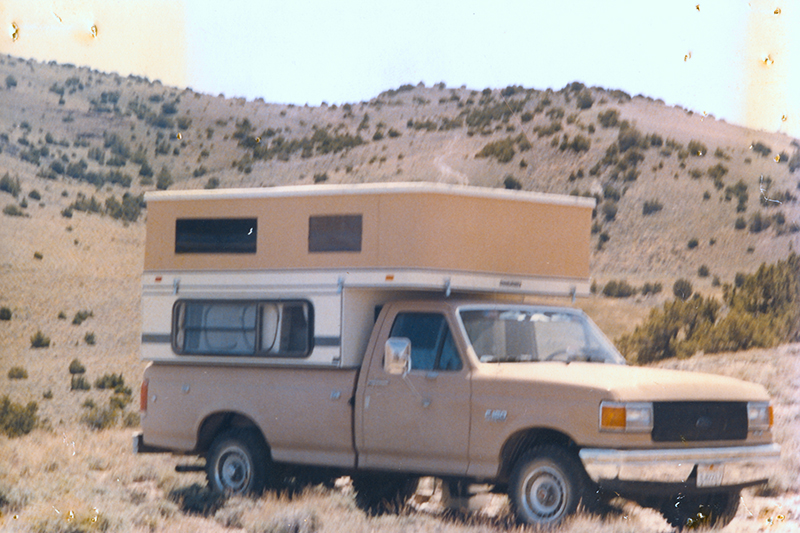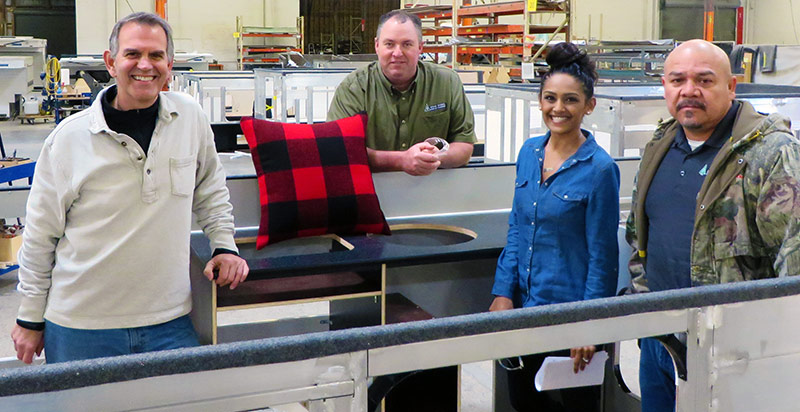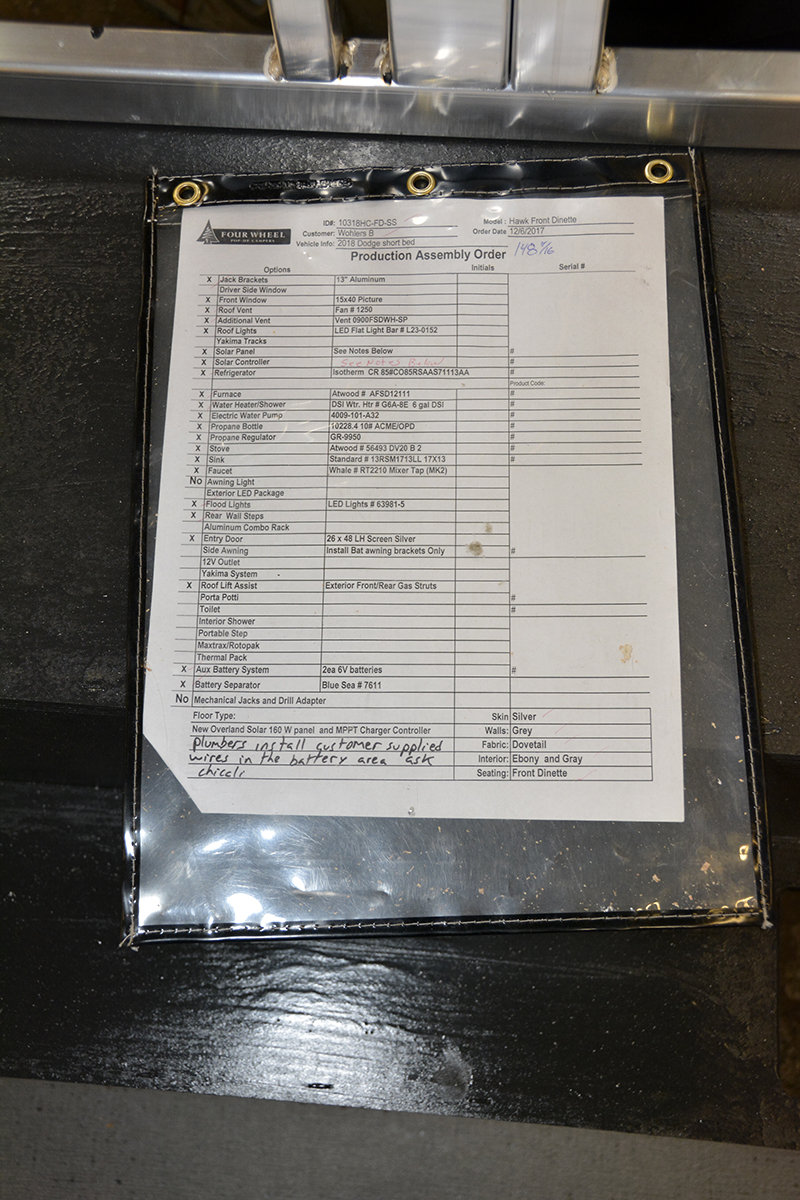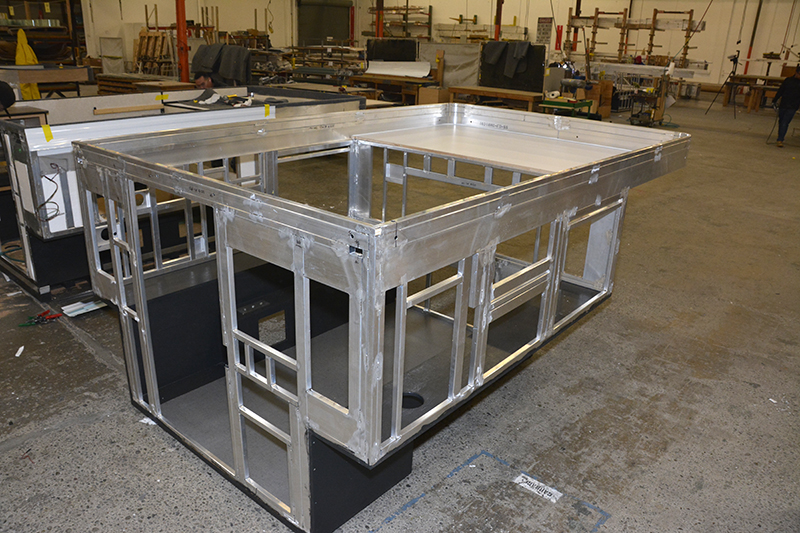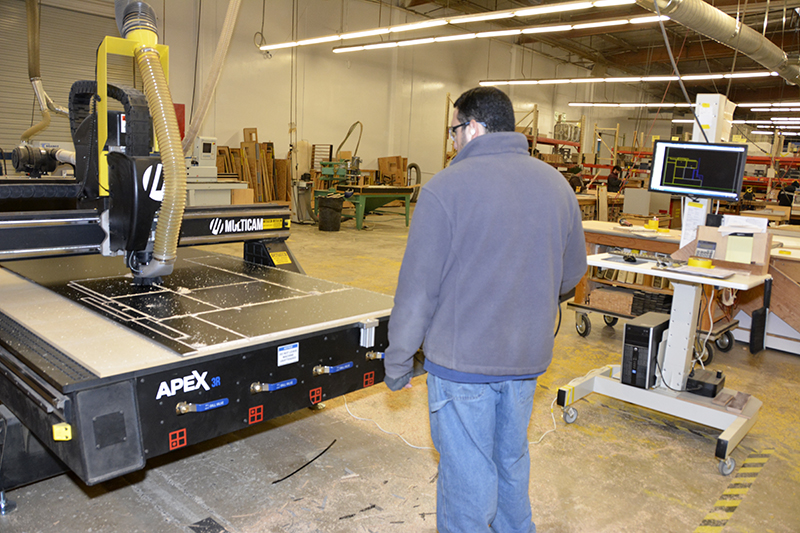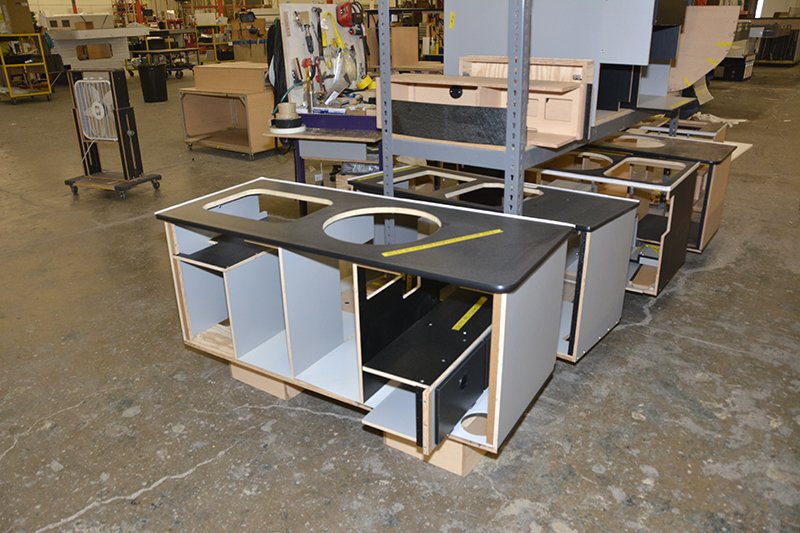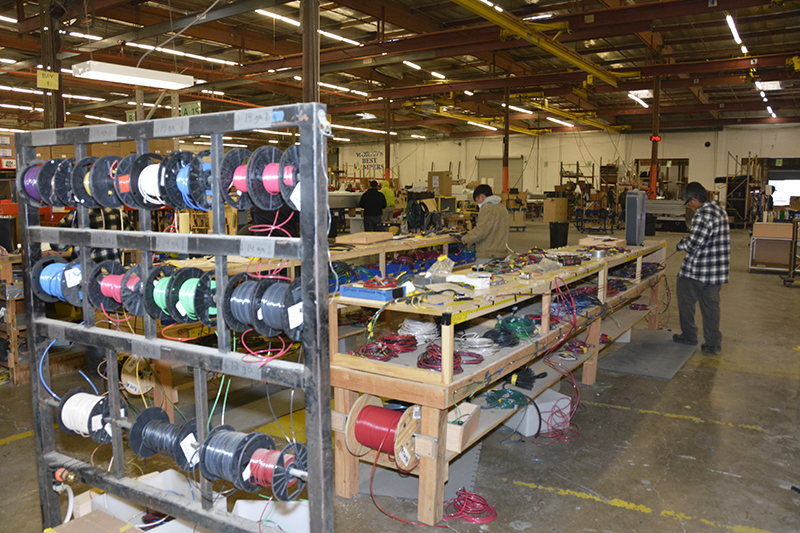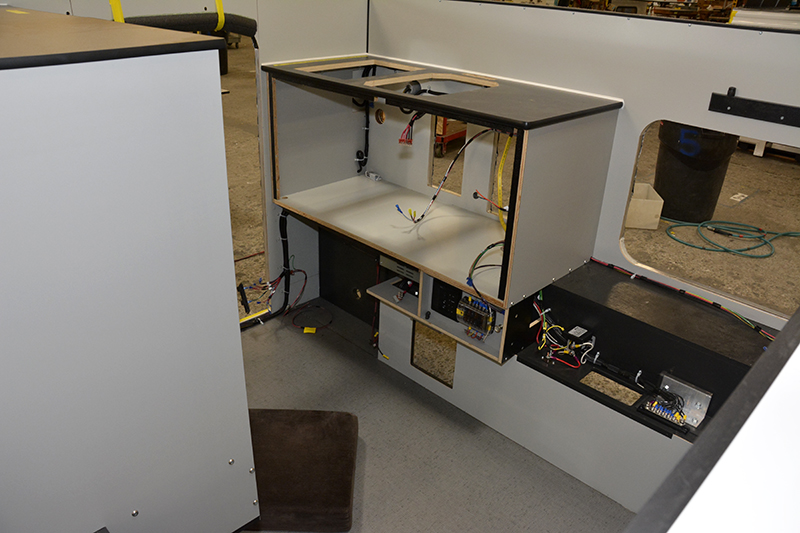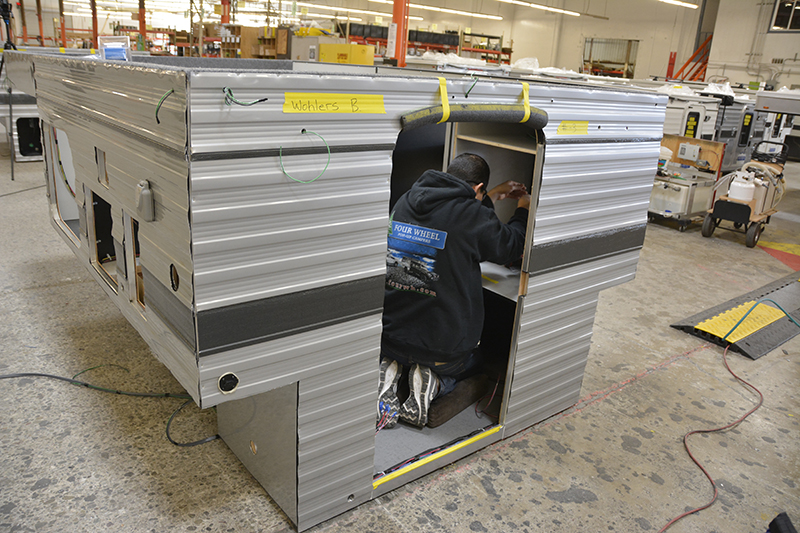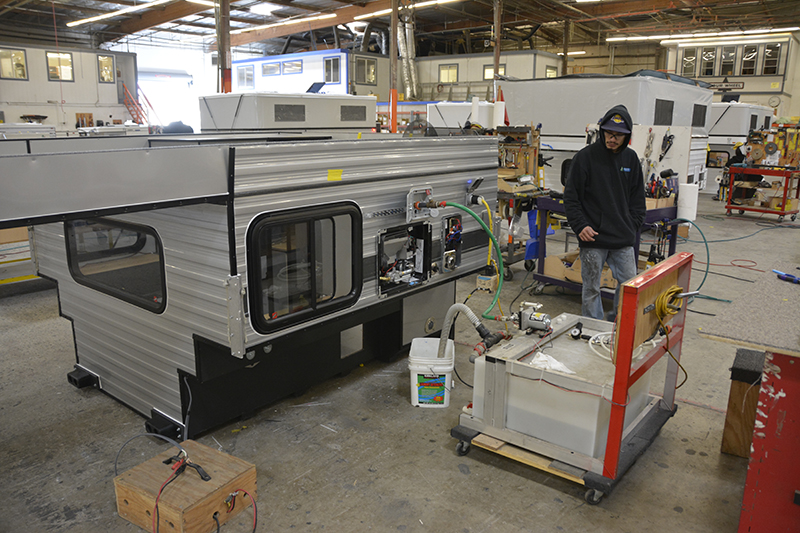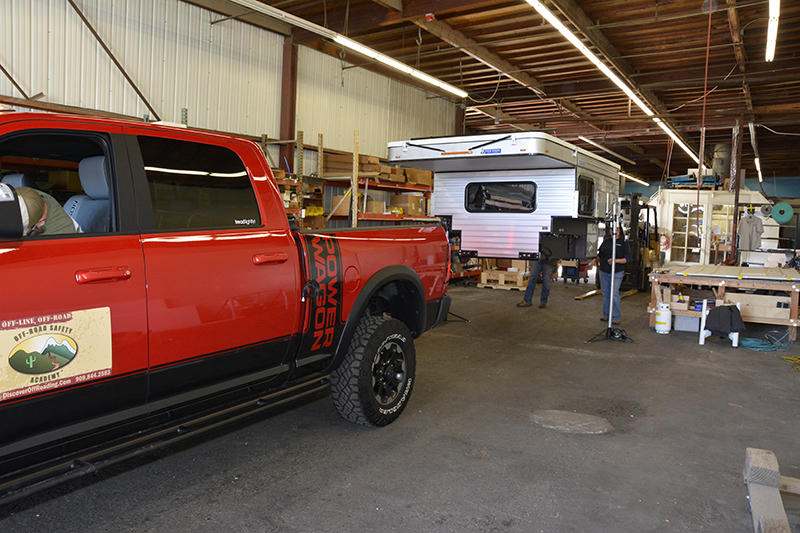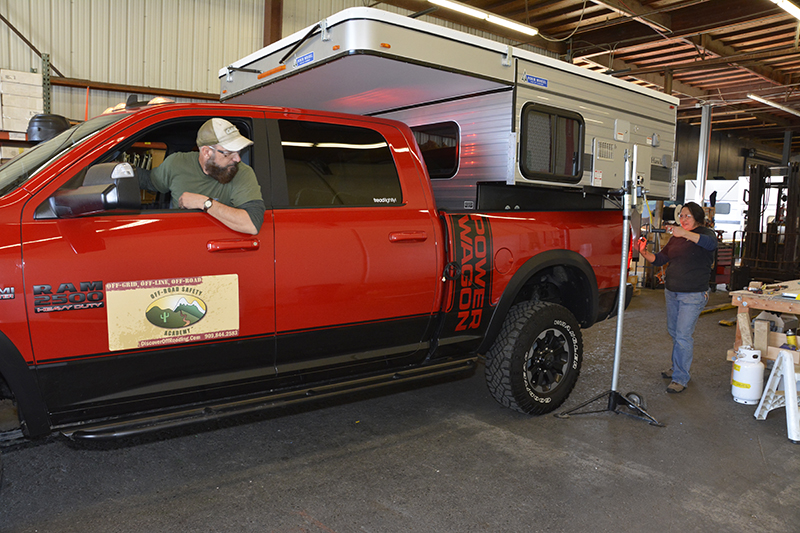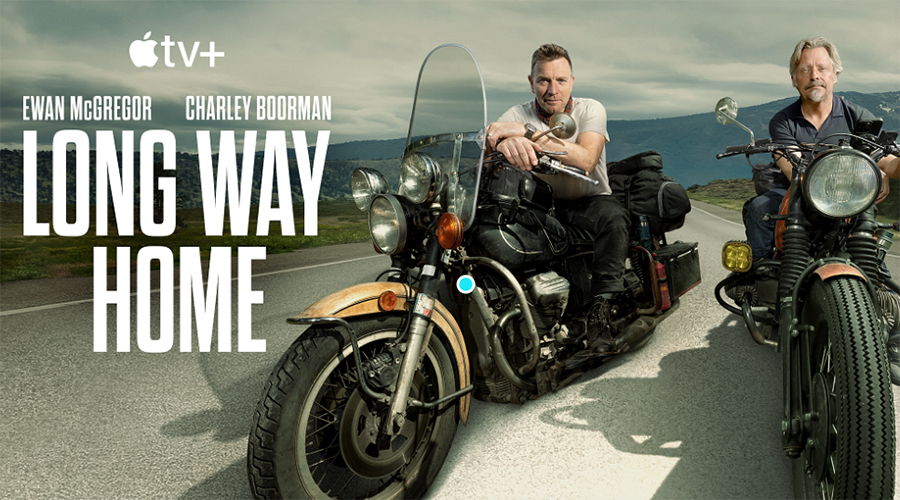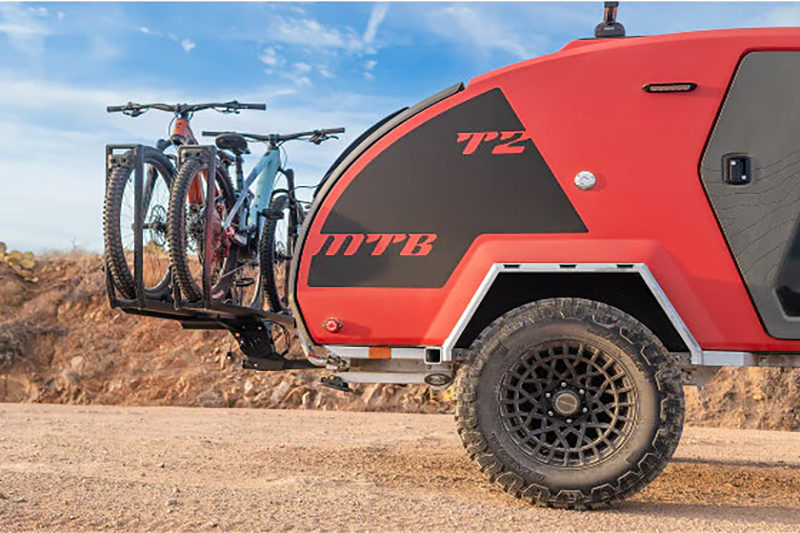Indulge Me… My Path to a Camper
From the early-70’s until the latter portion of the 1980’s, my off-roading included an assortment of used and scruffy vehicles, some 4WD and some not (like my VW dune buggy). My total kit included an ice chest, some food, a bag of clothes (including dirty laundry at the beginning of a trip), scuba gear, water containers, some extra fuel, plus my hiking tent with my trusty Coleman lantern and stove. I was young and on a very tight budget. Hey… it was Baja. Remote camping comfort wasn’t really a major consideration. Camping and diving at Bahia de Los Angeles, Escondido Bay, La Paz, and Cabo Pulmo was everything – even before some of Highway 1 down Baja was completed.
In the 90’s I had a family that included two kids. Initially, off-road camping with the family didn’t really change that much. Okay, I had a better tent and sleeping bags, more organized kit, and I left home with a suitcase of clean clothes. We also packed lots more food. Before the kids grew, we all went out in the tiny CJ-7. How did we do that? As they got larger and started bringing friends, I purchased a Ford F-250 with a shell I could sleep in, tote the gear, and tow the Jeep.
In the early 2000’s I remember seeing write-ups and ads for a camper built exclusively for the rigors of off-roading. The notion of having the comforts of a fully enclosed camper in the backcountry was very enticing. The older I got, the greater the appeal. For the first time, I was really desirous of camping in comfort.
Several years ago, as we started to call what I’d been doing for five decades Overlanding, my wife and I purchased an off-road trailer to tow behind our Jeep TJ. I put all the stuff in and on the trailer – roof top tent, kitchen box, tools, camping stuff, a solar panel, spare battery, extra fuel cans, 30 gallons of water, and even a hot water shower and awning. Camping was much better and we could stay longer in the backcountry. That said, we were still forced to cook and sit outside, plus reside and sleep in a tent in bad weather, albeit, off the ground. Have you ever been forced to exist in a roof top tent all day because of howling winds and snow flurries?
Then there was the actual towing of the trailer. Ugh. For me, towing the trailer did have some downsides – on the pavement and off. The first shortcoming of towing the trailer was that the Jeep TJ struggled to make even 55 mph on the highway. It took forever to get to distant trailheads in far away states. The purchase of a 2013 Jeep JK Unlimited with the Pentastar engine allowed me to get close to some speed limits when towing, but it was still slow. Second, due to the trailer’s weight, my gas mileage in both Jeeps was horrible. Last but not least, and in my opinion, towing a trailer off-road isn’t twice as hard as driving without one; it’s three times harder. When trailer towing off-road, my Jeep felt like a shark with a remora on its back. Narrow, rocky, and uphill trails fraught with switchbacks are a true challenge with trailers regardless of the towing vehicle. It gets even worse in bad weather. Don’t get me wrong, off-road trailer towing is a skill set I am glad I learned, and we did enjoy trailer camping rather than tents on the ground. At this stage of my life however, I’m happy to be mostly done this mode of Overlanding.
Enter my new 2018 RAM Power Wagon and Four Wheel Pop-Up Camper. At last I can remote backcountry camp in style. I know the limitations of a longer and heavier truck versus a shorter wheelbase Jeep Wrangler or FJ Cruiser. But when I examined the plush comfort advantages of having a camper in the backcountry, I started researching the truck platform and camper options I felt would fit my needs.
Now that I’ve experienced my new mode of camping in the backcountry, I’m awake at nights wondering why it took me so long to purchase this amazing overlanding setup. This is the vehicle and camper combo I’ve been dreaming of for decades. Will this overlanding platform be my last? Probably not. Will I sell my rock crawling Jeep TJ because I now have “all the 4WD vehicle I’ll ever need?” No – it’s a different type of off-road vehicle. Fact is I can now tow the TJ with my Power Wagon and Four Wheel Camper should I need or desire both types of off-road vehicles during a single outing.
When I decided to ditch the off-road trailer as my primary overlanding camping solution, I called Frank Ledwell, Editor of OutdoorX4 Magazine. I told him of my plans to purchase a new 4WD truck and camper combo. He agreed with me that Four Wheel Campers (FWCs) was the way to go. He connected me with RAM for the vehicle and Four Wheel Campers for my backcountry abode.
Every year at Overland Expo I would duck into the FWC booth to enviously glance at their new models and upgrades. It was time. My 4WD training business, book writing, photographic, and general overlanding adventure plans demanded this platform for convenience and comfort.
Why I Decided on a Four Wheel Pop-Up Camper
Over the last three years, I’ve been researching campers built exclusively for overlanding. I looked at all the available products at shows and in the backcountry; including larger overlanding RVs. I’ve even had some of my students bring these vehicles to my 4WD courses. For me, and at this moment in my life, the truck-based camper solution seemed like a really good fit relative to price, accessibility, simplicity of use, and solid build.
I decided on FWC products because of the company’s longevity and survivability, plus the camper’s “beyond reproach” fit and finish. Further, I realized that the camper’s lightweight quality, durability, simplicity, and low center of gravity (pop-up) features are sine qua non for my overlanding plans.
From FWC, I opted for their Hawk slide-in camper. I love FWC flatbed camper versions, but for me the slide-in style allowed me some truck use versatility.
Company Longevity and Survivability
FWC has almost fifty years of success as a camper company and is most assuredly not a “startup” company. No doubt FWCs will be around for many years to come. This fact is huge for me as I already suffered with an off-road trailer made by a company that went out of business soon after I bought it. I certainly didn’t want that to be the case with my new camper.
Dave Rowe, who also invented the initial design of a pop-up lift mechanism, founded FWC in 1972. The mechanism he designed was a simple articulated lift panel at the front and back of the camper, providing maximum stability in high winds plus support for a snow load or items on the roof. The mechanism was like no other on the market and thus patented.
Over the decades, the company was purchased and run by three other owners – Jack Billings, Ben Burnett, and Tom Hanagan. For the past 15 years, Tom and his wife Celeste nurtured the company to where their refined camper build became the superstar of off-road capable campers.
In 2016 Tom and Celeste decided to retire and enjoy their own camper travel adventures. Wanting to leave the company in good hands, they sold the company to Salt Creek Capitol, a California-based private equity firm. Robert Vogl, an Executive Partner with Salt Creek Capitol, has taken over as CEO. I liked Robert from the first meeting.
With broad business acumen and assembly line expertise, Robert plans to modernize the manufacturing system within FWC. As he shared with me some of his plans to streamline the build process, he continually emphasized his firm commitment to retain the high quality of the final product. No doubt, Robert’s assembly line modernization will increase customer satisfaction by reducing camper delivery wait times after an order is placed. Like any highly prized and sought after product, FWC can’t build their products fast enough. This speaks directly to the notion that FWCs will be around for a long time to come.
Camping Along the Highway
I towed my trailer on the highway, sometimes through many states, to arrive at my intended off-road trailhead. During these journeys it was necessary to either secure a motel or pop the roof top tent on my trailer to camp along the highway or in truck stop parking lots. Remote roof top tent camping seems natural to me, but not in urban settings. More often than not, I would secure a motel during the highway portion of my adventure. That represents on average about $70 a night. This adds up fast.
Now with my FWC on the back of my truck, I can pull over practically anywhere along the highway to sleep, eat, work, or relax. Even Wal-Mart security leaves me alone. The added benefit is a locked door when urban or parking lot camping, rather than displaying an inviting ladder up to my unlocked tent flap.
Camper Fit and Finish
Before I laid down my hard earned cash for a camper, I went to the FWC factory in Woodland, California. I wanted to see first hand, the assembly line build and look under the aluminum outer skin and interior cabinets. I wanted to visualize the pieces parts you can’t see under a finished product. As I suspected, I was impressed with the expert frame welding, wiring, mahogany plywood cabinetry, and component (stove, furnace, refrigerator, etc.) placement. The understated attention to detail and general craftsmanship of the build convinced me that this was “my” camper.
After I put my money down on a camper, FWC graciously allowed me to enter the factory to digitally image my camper’s actual build. The following is a photo treatise of my camper build from start to finish. I could not have made a wiser choice than to purchase a Four Wheel Camper. As they say, “I’m a happy camper.”
Each camper build begins with a Production Assembly Order, outlining the custom features selected by the customer. Building a camper with the options a customer wants is what FWCs is famous for. If you don’t wish to order your camper, you may see any one of a number of Four Wheel Camper distributors across the country for already completed campers
Each build begins on a jig to properly align and weld each side of the camper. Each camper frame is built of aluminum tubing and extruded channel. This framework has the ability to flex, providing greater strength and durability when taken off-road.
Once the wooden floor is made, the camper’s frame sides from the jig are assembled and welded. At this point, you can begin to envision the basic shape and durability of the camper.
Shown is the frame of my camper, moving down the assembly line.
Each space between the frame supports gets foam insulation to keep the camper warm or cool inside when the ambient temperatures become extreme.
As the camper frame is assembled, on the other side of the FWC factory cabinet pieces are cut and assembled.
Custom wiring looms are constructed for individual camper models and the various options chosen by the customer.
Once the frame is completed and the insulation installed, the build moves toward completion very rapidly. The inside walls are positioned and wiring begins.
With the outer aluminum siding on, attention turns to the wire loom installation. The wiring has to be completed and tested prior to fitting components such as the refrigerator, furnace, water pump, hot water heater, and the like.
With the important components fitted in the camper, each is test several times for proper function. The inner plumbing is also tested at higher pressure for possible leaks and the water storage container is cleaned.
Once the inner camper is practically finished, it is fitted with its roof and pop-up capability brackets, fabric siding, and gas struts.
At the very end of the assembly line comes the all important quality control check. At this point, final fit and finish details are completed along with making sure everything functions properly.
The final step of the total build is to mate the camper with the truck. Whether you purchase your camper from the Factory or one of FWC’s fine dealers, they can assist you with this important step.
Learn more about Four Wheel Campers by visiting www.fourwh.com.
* OutdoorX4 Magazine – Promoting responsible 4×4 adventure travel and outdoor recreation


